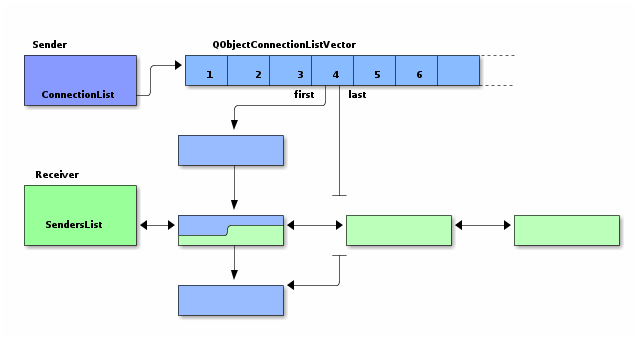Remove Slot In Qt
Questions: This doesn’t seem easy. Basically, I add QPushButtons through a function to a layout, and when the function executes, I want to clear the layout first (removing all QPushButtons and whatever else is in there), because more buttons just get appended to the scrollview. Header QVBoxLayout. layout; cpp void MainWindow::removeButtonsThenAddMore(const QString &item) //remove. Remove those slots from the header file of your class and from the source file. Then clean your project, run qmake and rebuild it. Adding slot for a signal of a widget is easy: right click on it and select 'go to slot'. But how can I remove the slot created for a button (like onpushButtonclicked) from the Qt designer.
Introduction

Remember old X-Windows call-back system? Generally it isn't type safe and flexible. There are many problems with them. Qt offers a new event handling system: signal-slot connections. Imagine an alarm clock. When alarm is ringing, a signal is being sent (emit). And you're handling it in a slot.
- Every QObject class may have as many signals and slots as you want
- You can emit signals only from within that class, where the signal is located
- You can connect signal with another signal (make chains of signals);
- Every signal and slot can have unlimited count of connections with other.
- ATTENTION! You can't set default value in slot attributes e.g. void mySlot(int i = 0);
Connection
You can connect signal with this template:
QObject::connect (
);
You have to wrap const char * signal and const char * method into SIGNAL() and SLOT() macros.
And you also can disconnect signal-slot:
QObject::disconnect (
);

Deeper
Widgets emit signals when events occur. For example, a button will emit a clicked signal when it is clicked. A developer can choose to connect to a signal by creating a function (a slot) and calling the connect() function to relate the signal to the slot. Qt's signals and slots mechanism does not require classes to have knowledge of each other, which makes it much easier to develop highly reusable classes. Since signals and slots are type-safe, type errors are reported as warnings and do not cause crashes to occur.
For example, if a Quit button's clicked() signal is connected to the application's quit() slot, a user's click on Quit makes the application terminate. In code, this is written as
connect(button, SIGNAL (clicked()), qApp, SLOT (quit()));

Connections can be added or removed at any time during the execution of a Qt application, they can be set up so that they are executed when a signal is emitted or queued for later execution, and they can be made between objects in different threads.
The signals and slots mechanism is implemented in standard C++. The implementation uses the C++ preprocessor and moc, the Meta Object Compiler, included with Qt. Code generation is performed automatically by Qt's build system. Developers never have to edit or even look at the generated code.
In addition to handling signals and slots, the Meta Object Compiler supports Qt's translation mechanism, its property system, and its extended runtime type information. It also makes runtime introspection of C++ programs possible in a way that works on all supported platforms.
To make moc compile the meta object classes don't forget to add the Q_OBJECT macro to your class.
Remove Slot In Qts
Signals and slots is a language construct introduced also in Qt[1] for communication between objects which makes it easy to implement the observer pattern while avoiding boilerplate code. The concept is that GUI widgets can send signals containing event information which can be received by other widgets / controls using special functions known as slots. This is similar to C/C++ function pointers, but signal/slot system ensures the type-correctness of callback arguments.[citation needed]
The signal/slot system fits well with the way graphical user interfaces are designed.[citation needed] Similarly, the signal/slot system can be used for other non-GUI usages, for example asynchronous I/O (including sockets, pipes, serial devices, etc.) event notification or to associate timeout events with appropriate object instances and methods or functions. It is easy to use and no registration/deregistration/invocation code need to be written, because Qt's metaobject compiler (MOC) automatically generates the needed infrastructure.
A commonly used metaphor[according to whom?] is a spreadsheet. A spreadsheet has cells that observe the source cell(s). When the source cell is changed, the dependent cells are updated from the event.
Alternative implementations[edit]
There are some implementations of signal/slot systems based on C++ templates, which don't require the extra metaobject compiler, as used by Qt, such as libsigc++, sigslot, vdk-signals, nano-signal-slot, neosigslot, Signals, boost.signals2, Synapse, Cpp::Events, Platinum and JBroadcaster. Common Language Infrastructure (CLI) languages such as C# also supports a similar construct although with a different terminology and syntax: events play the role of signals, and delegates are the slots. Another implementation of signals exists for ActionScript 3.0, inspired by C# events and signals/slots in Qt. Additionally, a delegate can be a local variable, much like a function pointer, while a slot in Qt must be a class member declared as such. The C based GObject system also provides similar functionality via GSignal.In D it is implemented by std.signals.
See also[edit]
Libraries[edit]
Remove Slot In Qt Box
Java: sig4j - multi-threaded, type-safe, based on the FunctionalInterface annotation introduced in Java 8.
Remove Slot In Qtc
C++: vdk-signals - thread-safe, type-safe, written in C++11 with atomic variables.
References[edit]
- ^'Signals & Slots - QtCore 5.1'. Qt Project. 2013-07-04. Retrieved 2013-07-04.